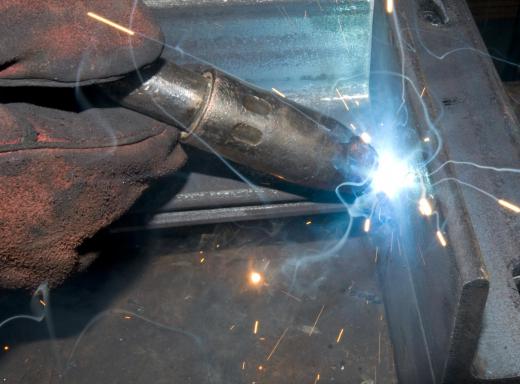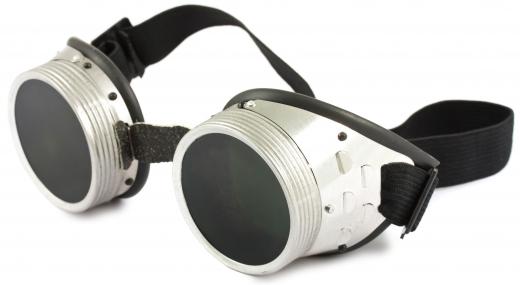At AboutMechanics, we're committed to delivering accurate, trustworthy information. Our expert-authored content is rigorously fact-checked and sourced from credible authorities. Discover how we uphold the highest standards in providing you with reliable knowledge.
What is a Welding Positioner?
A welding positioner is a device that rotates round or tubular work pieces such as flanges and pipes through 360 degrees to allow a welder to stand in one position and constantly work on a level surface. This prevents worker fatigue and increases productivity since the welder does not need to constantly move around the pipe to complete the weld. This method of work piece presentation also tends to ensure consistently high quality welds since no overhead or vertical runs are involved.
Joining pipes or attaching pipe fittings such as flanges and valves is a problematic task from an execution perspective due to the 360-degree work plane. Without the use of a tool such as the welding positioner, the artisan may have to constantly move around and under the pipe to complete the joint, which is not conducive to good quality welding. In particular, this causes fatigue, is time consuming, and requires vertical and overhead welding runs with frequent interruptions for re-positioning.

A high quality arc welded seam requires adequate penetration of the material, a level work piece orientation, and carefully controlled welding speed with a minimum of interruptions. To achieve good arc penetration, the welder needs to work at the highest amperage rating the welding rod or electrode will allow. For this to be effective, the work piece needs to be level so that the pool of molten metal settles into the seam without sagging or running. This is the biggest problem with welding vertical or overhead runs where lower amperage settings are required to prevent sagging of the weld pool. Correct weld speed and run continuity are also vital components of a sound welded joint.

All of these requirements are difficult to achieve with a static work piece. A welding positioner solves all of these problems by revolving the work piece at a controllable, constant speed. This allows the artisan to stand in one position and work in a permanently level orientation. The welding positioner can also be controlled to rotate the work piece at exactly the right speed to maintain a continuous, adequately penetrative weld.

Finishing a circular joint in one operation reduces completion time and boosts productivity. The welder can also sit or stand comfortably which reduces fatigue and allows for better focus on achieving a perfect seam. A welding positioner may be electrically or pneumatic-hydraulic driven and is available in a wide range of sizes to suit all applications.
AS FEATURED ON:
AS FEATURED ON:













Discussion Comments
This is a very thorough description of a welding positioner. Though they range from a carrying capacity of 25kg up to 30,000kg or more and now are made to include a digital display reader which include rpm.
They can be used in conjunction with rotators and boom welders for sub arc welding or be adapted to work as a lathe welder.
Post your comments